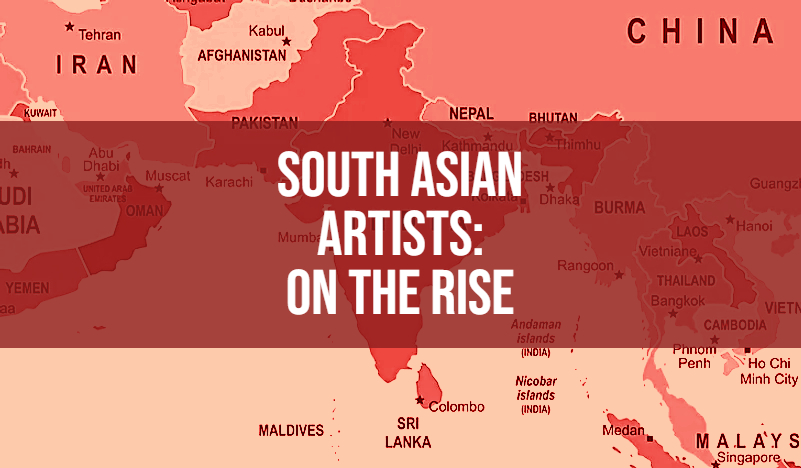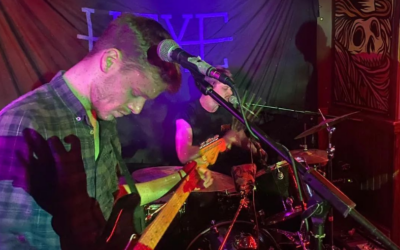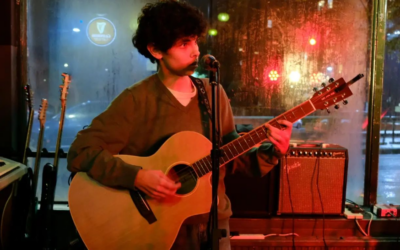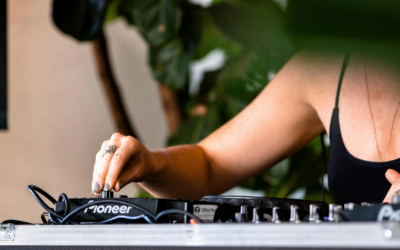As our cultural identities shift and merge, so do our music tastes and genres. Nothing is more indicative of that than the rise of multicultural artists who utilise their mother tongues to create big hits. But is there a market for it? And how do you even start? Zain Durrani talks to up and coming South Asian artists to learn more.
For a long time, popular South Asian tunes were relegated to either Bollywood tracks or Bhangra hits. Aside from a few breakthrough artists, it has been hard to make it if you weren’t making tracks that either appealed to a western audience or could be seen in an old flick.
But now, thanks to tunes like Tesher’s ‘Jalebi Baby’, and artists like Asha Gold, Hyphen, J Milli, and more popping up, the call to action for the UK’s South Asian music scene has never been louder.
Through use of this fusion music (that is, the combination of both Western beats and cultural vocals) the diaspora in the UK is managing to reach a new audience of people who want to pay homage to their heritage, whilst accepting their upbringings.
Salnoi
Saloni Boyina is a rising star in the South Asian music scene. Known professionally as just Saloni, she’s been infusing South Asian languages with R&B and pop music for years, managing to amass an ever-increasing 13,124 monthly listeners on Spotify.
With the rise of English-born South Asians, like Saloni, born in Milton Keynes to Indian parents, the desire for a connection that embraces and reflects both their western upbringing and their cultural heritage is an understandable one, but it’s always difficult to take that first step:
“I used to have a very separate identity,” Saloni admitted, “I used to keep my pop side separate and my Indian side separate. It was only until I turned 18 that I tried to mix the two things together.”
It’s not just Saloni’s mother tongue of Telugu that she’s appealing to – with a team of lyricists that speak a variety of South Asian languages (including: Punjabi, Hindi, Bengali, Tamil, and Malayalam), she’s been working hard to appeal to as much of the South Asian diaspora as she can.
She’s had countless successes – from being played on the BBC Asian Network, to being featured in Rolling Stone India and, thanks to big hits like Nee Gundellounna, Saloni has been proving that there is a market and a demand for multicultural music.
Golden Roots
Sehaj Singh is a London born Punjabi artist known professionally as ‘Golden Roots’. He describes his music as an ‘experimental’ fusion of hip-hop and Punjabi folk, which he expresses through vocals in his mother tongue.
“The core purpose for doing the music isn’t because I’m gonna sing in English, or anything else that’s very westernised,” Singh said, “The predominant influence is always going to be in Punjabi because the language that I’m gonna sing in is Punjabi.”
Influenced by his father’s own ability, Sehaj took on formal singing lessons, helping him master his control of ragas (melodic frameworks in classical Indian music which work to create unique notes and emotional expressions). For him, singing in Punjabi isn’t simply a choice of language, but a form of expression to highlight his cultural identity.
Sehaj reflected on his decision to pursue more formal training, saying that “It was like taking that passionate bathroom singing to something more professional.”
Backed by his 23,849 monthly listeners on Spotify, Golden Roots’ multilingual melodies have been played across the nation, on radio stations like BBC Asia, BBC Radio 1Xtra, and more.
The Journey
The road for any artist is tough, let alone for one who is trying to place themselves in a still-growing genre. For Saloni, who rose out of a family ‘without a single musical bone in their body’, her advice is to simply, say yes:
“If you like something, literally, take any opportunity”, Saloni said.
“As you become more established, you can pick and choose. But, at the beginning, take any opportunity you can.”
Saloni’s parents pushed her to join ‘Big Help Music’, an artist development group which taught her the ins and outs of being a musician, including how to perform live, claim royalties, and more.
“If my parents never pushed me for that, and I never said yes, I probably wouldn’t have made half of this stuff.”
Challenges
Saloni said: “It’s always tough trying to make a career out of something that’s unconventional – it’s not a known path within the community that I’m in. The music I make is quite experimental.”
Within a genre that is still making its way to the mainstream, finding a good team can be difficult – that’s why many artists have had to take on the responsibilities of an entire production team.
“There’s PR, then there’s marketing, then there’s press, then there’s everything else.” Golden Roots said, “It’s actually a lot more difficult now as an artist and I think that’s where it becomes a chore. It can easily happen when you have to do all of those things.”
“I have so many roles and I’m wearing so many hats – that’s why after I’ve dropped my EP, I’m kind of just taking a step back so that I don’t lose the passion for it.”
But he knows that it’s all just part of the job:
“Just do what you love; consistently carry on pushing. That’s what I’ve been doing, and I think there’s points at which you can be ignored when you first start because you might not get the interest from people, but, if you constantly push and drive yourself to make music, those people who initially didn’t hear you, are forced to hear you.”
Saloni echoes the sentiment: “The business side is tough but nothing good comes easy. You have to do the hard bits to do what you really want to do.”
Next Generations
The part of the diaspora that is affected by these new sounds is the current generation of displaced South Asian teens and young adults. The future of multilingual artist is in the hands of the youth today, and Golden Roots says that they have to make the most of it:
“When I was younger I was doing music at GCSE and we had Logic Pro set up right there in front of us. I could’ve played around with it, I could’ve enhanced my singing ability by practising ten times more than what I did.”
“If you’ve got time when you’re younger to really hone your craft, then take advantage of the time you have.”
This fusion music is still in its early stages, so many musicians may be fearful of diverting from the mainstream and singing in the languages they feel the most comfortable in. Saloni assures artists with this dilemma to just go for it:
“Now more than ever, it’s being accepted – so don’t feel afraid whatsoever,” she said, “I know it’s easier said than done, but really try to hold on to that. Put it out to the world because you never know how it’s going to be accepted.”
“I’m representing my culture which I didn’t see a huge amount of growing up,” Saloni said, “That’s kind of why I do what I do. There’s probably so many more like me.
Saloni and Golden Roots are just the start – as more multilingual artists begin to appear, the representations of South Asians in the world of music are only going to change to reflect its new place in the diaspora.
Follow us on Instagram, Twitter, Facebook and Tiktok for more content!









